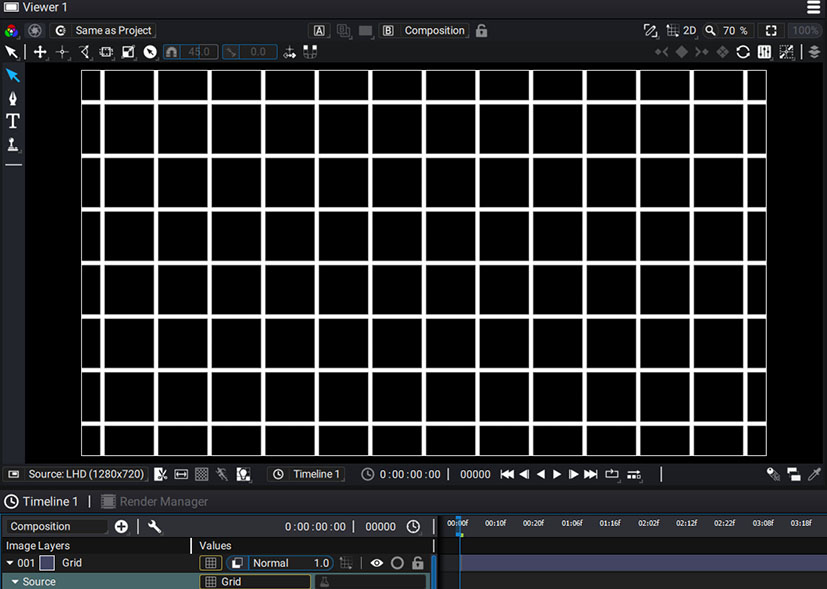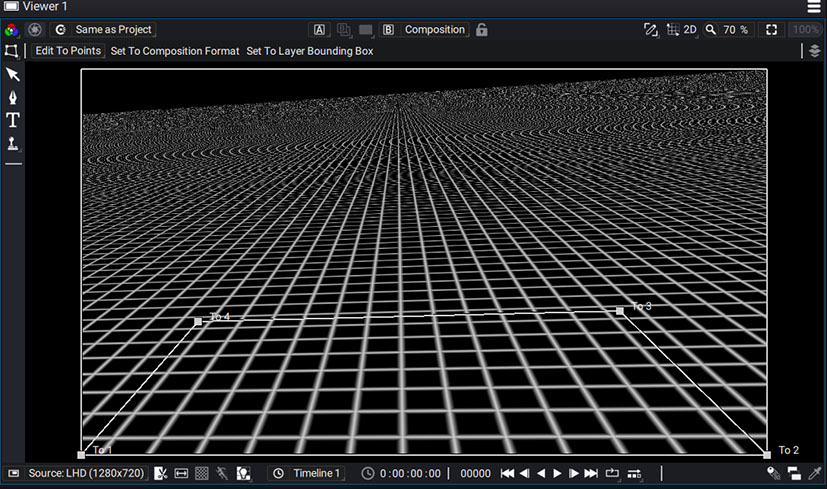Supersampling
When a layer undergoes strong distortions and deformations, in particular when the source is a generator, the large amount of information gathered in a very small space can produce artifacts such as Aliasing and Moiré.
In the following example, the artist creates a grid in Autograph with lines that are initially perpendicular to the composition format.

A Corner Pin transformation modifier is then applied to simulate a 3D perspective effect.

Autograph allows you to create sources with an infinite size. Because of the Corner pin, the amount of information as well as the number of grid squares concentrated on the horizon line becomes enormous. At the bottom of the image, a square extends over a hundred pixels. This is enough to properly represent the shape and direction of each line; but, at the top of the image, several squares of the grid end up being represented in the space of a single pixel.
The amount of information is far too high compared to the image definition in this area. Each pixel will have to collect and represent elements that are completely different from ajacent pixels in aspect and in number, resulting in a cluster of pixels almost randomly, hardly able to represent this high level of detail.
The goal of Supersampling is to greatly reduce these artifacts. This method calculates not one, but several quasi-similar images of the same layer, before merging them.
This calculates the content of the layer after having undergone a very slight random displacement of less than one pixel.
Each of these images will produce some artifacts similar to those mentioned above, with the same level of "quality", but these artifacts will be different each time.
Once these images have been calculated, we will divide the intensity of their pixels by their number, before adding them together in a way that's somewhat similar to the Add blending mode.
The Supersampling value defines the number of variations calculated by Autograph (from X1 to X16) before averaging them. The higher this value, the better the result, at the cost of more or less calculation time depending on the case.
Most of the time, X4 is a good enough value but depending on the level of detail, it may be useful to go higher.